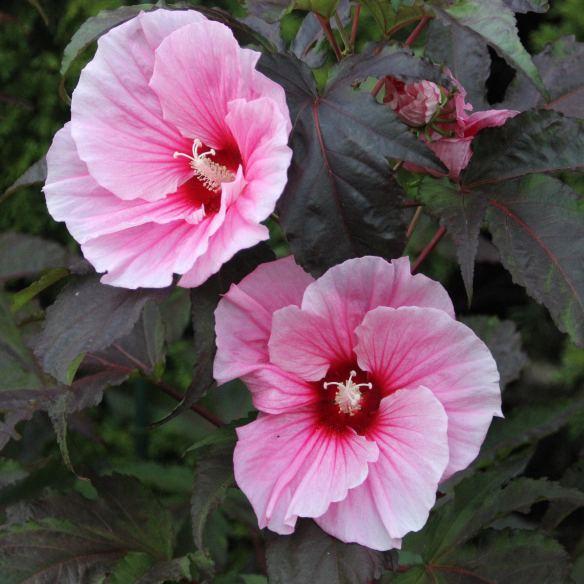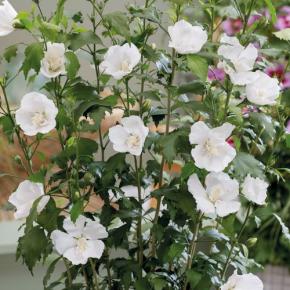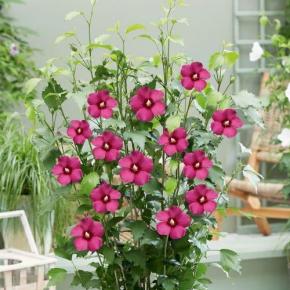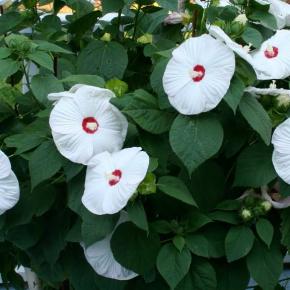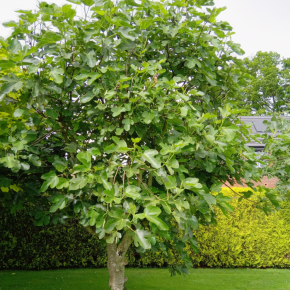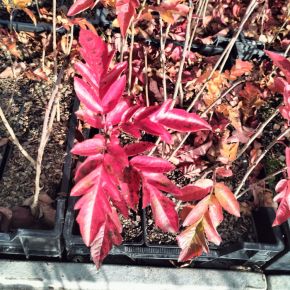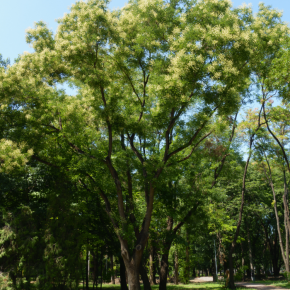Hibsicus Fleming Summer Storm® is a swamp hibiscus with a broad and sensual flowering, of a beautiful pale pink with a red velvet heart. The plant disappears in winter and leaves again in spring. We like its good hardiness (about -15°C), its ease of cultivation, its bushy character and its magnificent flowering (the flowers are about 25 cm in diameter) which occurs between July and October.
|
Packaging
To find out more about our packaging, please visit our young plants' page available from the website header.

|
Available quantity | Dispo à partir de | Sold by | Desired quantity | |
|---|---|---|---|---|---|
|
Le stock n'est actuellement pas disponible pour ce produit. |
|||||
All details concerning Hibiscus Fleming Summer Storm®
This variety of marsh hibiscus is spectacular because of its huge pale pink flowers with a voluptuous red heart, about 25 cm in diameter, that appear from July to September/October. The dark green foliage forms a beautiful contrast with the broad and sensual flowering. The Hibiscus Fleming Summer Storm is obsolete: the plant disappears in winter and leaves again in spring, around March or April.
How to use Hibiscus Fleming Summer Storm® ?
Its bushy wingspan is about 1m x 1m, which makes it a beautiful shrub of a mixed-border, a mixed hedge or even an isolated plantation. It can also be planted in pots or large planters to enjoy its colours and elegance on a terrace, balcony or patio. Hibiscus Fleming Summer Storm is resistant and rather easy to grow, making it an ideal plant for beginner gardeners..
What advices to achieve the Hibiscus Fleming Summer Storm®'s growth ?
We prefer a rather rich and drained soil. It is exposed to the sun and protected from the wind if possible. We water in summer to encourage flowering. Its rusticity is good, like its cousins the hibiscus of the marshes, of the order of -15°C, or even more.

